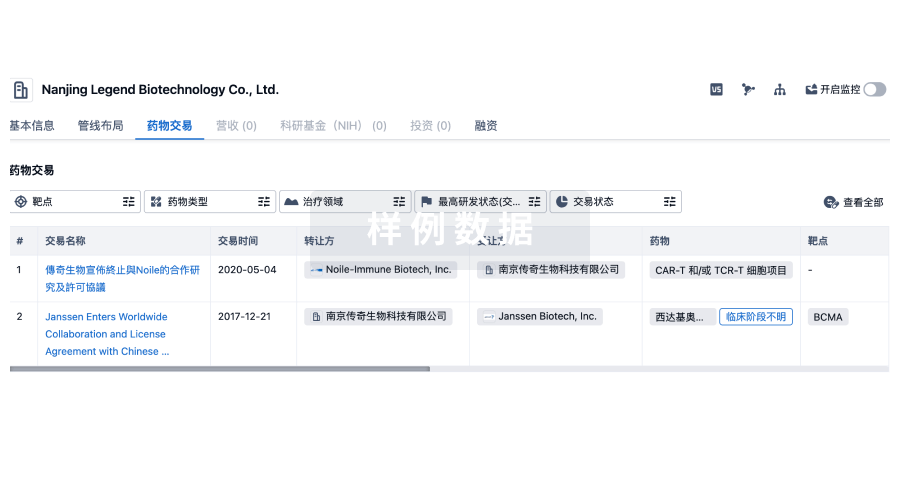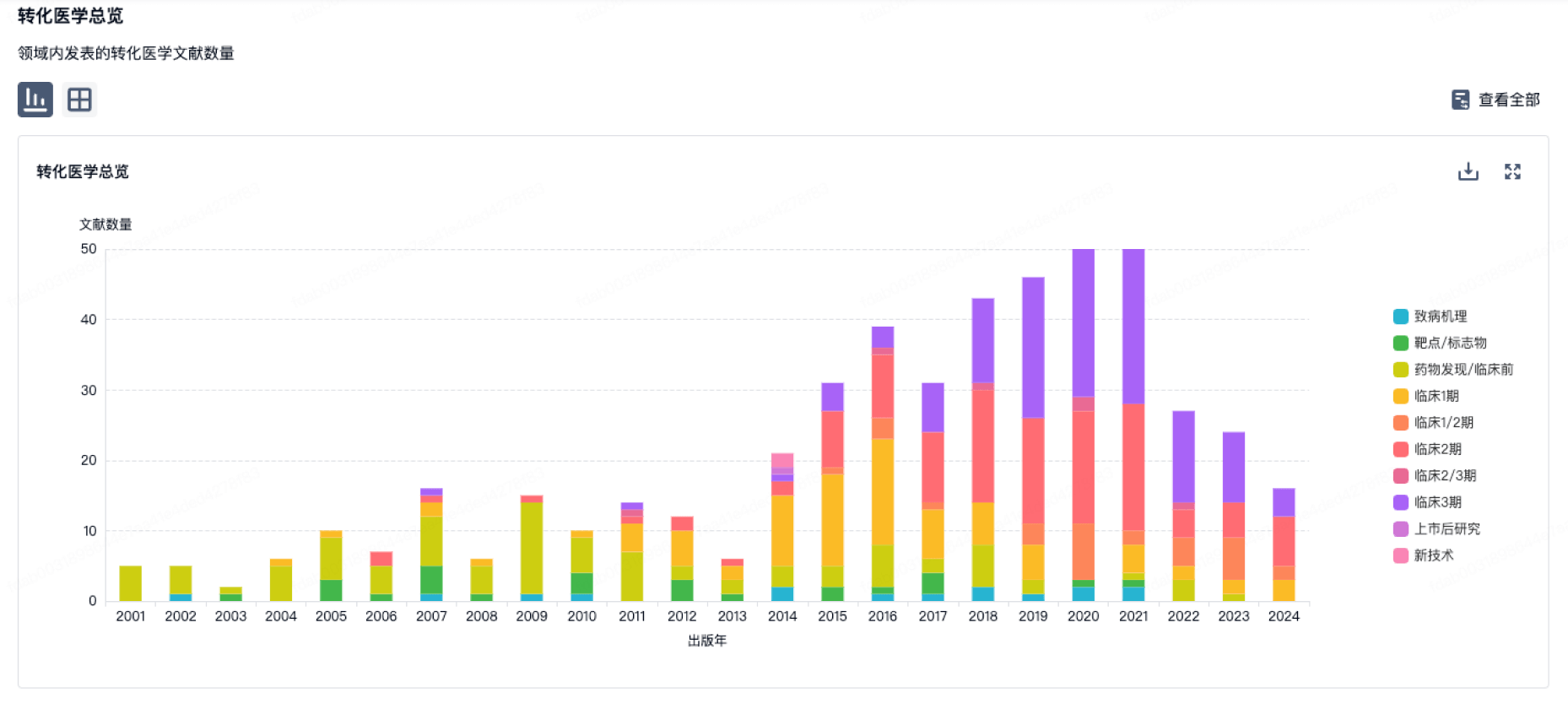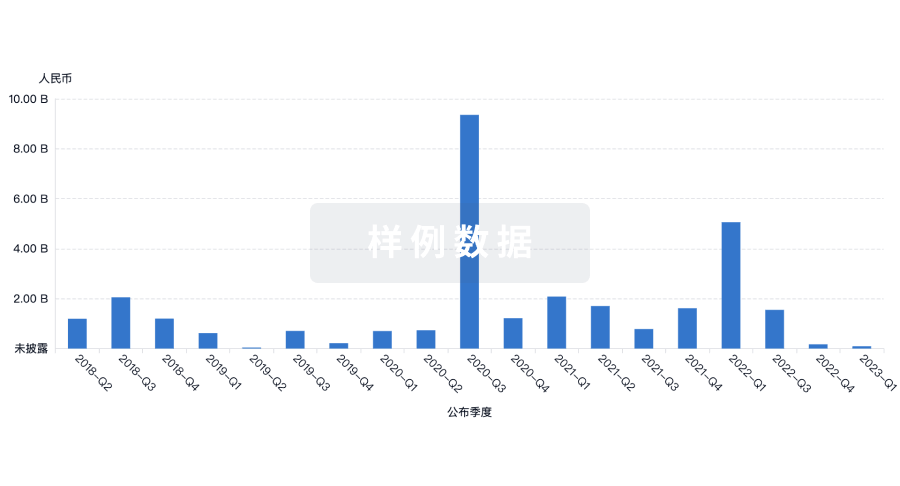预约演示
更新于:2025-12-08

The Ohio State University
更新于:2025-12-08
概览
标签
肿瘤
感染
皮肤和肌肉骨骼疾病
小分子化药
化学药
ADC
疾病领域得分
一眼洞穿机构专注的疾病领域
暂无数据
技术平台
公司药物应用最多的技术
暂无数据
靶点
公司最常开发的靶点
暂无数据
| 排名前五的药物类型 | 数量 |
|---|---|
| 小分子化药 | 47 |
| 化学药 | 3 |
| ADC | 3 |
| 预防性疫苗 | 3 |
| 腺相关病毒基因治疗 | 3 |
关联
75
项与 The Ohio State University 相关的药物作用机制 FGFR1拮抗剂 [+3] |
在研适应症 |
最高研发阶段批准上市 |
首次获批国家/地区 美国 |
首次获批日期2021-05-28 |
靶点 |
作用机制 Bcl-2抑制剂 |
在研机构 |
原研机构 |
非在研适应症 |
最高研发阶段批准上市 |
首次获批国家/地区 美国 |
首次获批日期2016-04-11 |
靶点 |
作用机制 BTK抑制剂 |
最高研发阶段批准上市 |
首次获批国家/地区 美国 |
首次获批日期2013-11-13 |
1,513
项与 The Ohio State University 相关的临床试验NCT06919224
Delivering Patient-Facing Evidence-Based Guidelines Through mHealth to Adults With Sickle Cell Disease (PF-Guide)
In a hybrid type I effectiveness-implementation trial, our three-center research teams aim to examine whether empowering adults with sickle cell disease (SCD) with patient-facing SCD-specific guidelines through an mHealth application with booklets will decrease acute healthcare utilization and be cost-effective over booklets with the guidelines alone. Our team, head will test our hypotheses with the following aims: Aim 1: evaluate the effectiveness of the patient-facing guidelines mHealth app + booklet intervention to decrease acute healthcare utilization (hospitalizations, emergency room visits, and day hospital visits) in adults with SCD over the standard care in a randomized controlled trial, Aim 2: evaluate the implementation outcomes of the mHealth app + booklet using the capability, opportunity, and motivation-behavior (COM-B) and reach, effectiveness, adoption, implementation, and maintenance (RE-AIM) frameworks, and Aim 3: evaluate the cost-effectiveness of patient-facing mHealth app + booklets vs. standard care in adults with SCD. is hybrid effectiveness-implementation trial design, according to the COM-B and RE-AIM frameworks with a mixed-methods approach, will give valuable insights into the effects, facilitators, and barriers to the implementation that will influence the effects of the patient-facing guidelines intervention.
开始日期2026-04-01 |
申办/合作机构 |
NCT07267065
An Open-label Safety and Efficacy Study of AAV2-hAADC Administered by MRI-Guided Convective Infusion Using a Transfrontal Trajectory Into the Putamen and Caudate of Participants With Young Onset Parkinson's Disease
This study is looking at whether a gene therapy called AAV2-hAADC is safe and may help people with Parkinson's Disease.
AAV2-hAADC is intended to increase the levels of dopamine in your brain. It contains a virus called adeno-associated virus 2 (AAV2) that has been modified to carry the genetic code for an enzyme called Aromatic L-Amino Acid Decarboxylase, or AADC for short.
In this study, AAV2-hAADC is delivered to two parts of the brain called the putamen and the caudate. Increasing the amount of AADC gene in these parts of the brain converts more levodopa into dopamine, the chemical that is lacking in PD.
AAV2-hAADC is intended to increase the levels of dopamine in your brain. It contains a virus called adeno-associated virus 2 (AAV2) that has been modified to carry the genetic code for an enzyme called Aromatic L-Amino Acid Decarboxylase, or AADC for short.
In this study, AAV2-hAADC is delivered to two parts of the brain called the putamen and the caudate. Increasing the amount of AADC gene in these parts of the brain converts more levodopa into dopamine, the chemical that is lacking in PD.
开始日期2026-02-01 |
申办/合作机构 |
NCT07215988
Studying Off Label Insurance Coverage for Patients With Cutaneous Cancers a "Filter" Observational Study
This study evaluates the time spent on obtaining insurance approval and drugs, means of insurance coverage, out-of-pocket costs for patients, and the surgical outcomes after neoadjuvant treatment is completed in skin cancer patients receiving "off label" and "on label" neoadjuvant treatment. "Neoadjuvant therapy" means cancer treatment given before surgery. However, in many instances, neoadjuvant therapy is used as an "off-label" approach for several types of skin cancers. "Off-label" means that the FDA has not yet approved its use for that type of cancer. Therefore, insurance approval of these "off-label" treatments could be delayed compared to label use, and "off-label" treatments may require several weeks of pre-authorization. There is evidence that the delayed start of cancer treatment can lead to poorer outcomes.
开始日期2026-01-25 |
100 项与 The Ohio State University 相关的临床结果
登录后查看更多信息
0 项与 The Ohio State University 相关的专利(医药)
登录后查看更多信息
77,006
项与 The Ohio State University 相关的文献(医药)2026-01-01·Currents in Pharmacy Teaching and Learning
Evaluation of a critical illness simulation activity on perceptions and knowledge of interprofessional education between pharmacy and nutrition students
Article
作者: Sulejmani, Essilvo ; May, Casey C ; Roberts, Kristen M ; Williams, Victoria
OBJECTIVE:
Evaluate the effect of a novel interdisciplinary simulation activity in a critical care pharmacy elective course and assess students' perceptions toward interprofessional collaboration in the intensive care unit setting.
METHODS:
Pharmacy and nutrition students enrolled in respective critical care elective courses participated in a surgical intensive care unit (SICU) simulation activity. Students were divided into interprofessional groups with discipline-specific topics of focus and provided with a clinical case of a critically ill surgical patient with enteral feeding intolerance. Pharmacy students were assigned a six-question quiz administered pre- and post-simulation that assessed understanding of the role of the dietitian and basic nutrition concepts; all students were given discipline-specific reflection questions following the activity that evaluated students' change in perception of their role and the role of the other discipline in the interprofessional SICU setting.
RESULTS:
Nineteen pharmacy students and 11 nutrition students participated in the SICU simulation. Of the pharmacy students (n = 14) who completed both the pre- and post-simulation quiz, there was an improvement in quiz scores, 2.7 ± 0.97 to 4.3 ± 0.34; p < 0.001. Reflection question responses from all students revealed the following themes: enhanced self-perception of their own role, improved understanding of the other profession's role, and heightened degree of interprofessional respect in the care of a critically ill patient.
CONCLUSIONS:
The interprofessional SICU simulation activity enhanced pharmacy student knowledge about nutrition and broadened all students' understanding of the other profession's roles in critical care.
2026-01-01·ADDICTIVE BEHAVIORS
Effect of graphic warning label on acute changes in waterpipe tobacco smoking behavior, biomarkers of exposure and harm, and subjective effects in a randomized trial
Article
作者: Klein, Elizabeth G ; Jankowski, Emma ; Mehta, Toral ; Brinkman, Marielle C ; Curran, Hayley ; Mandarano, Lucia ; Adetona, Olorunfemi ; Ferketich, Amy K ; Nini, Paul ; Wu, Chieh-Ming ; Mays, Darren ; Pennell, Michael L ; Patterson, Joanne G ; Roberts, Megan E ; Angeles, David ; Keller-Hamilton, Brittney ; Thomas, Annabelle ; Kahassai, Soliana
INTRODUCTION:
Waterpipe (WP) smoking is commonly misperceived as less harmful than cigarette smoking. Graphic warning labels (GWLs) may correct misperceptions and reduce WP smoking. We determined the impact of a GWL placed on a WP on short-term smoking behaviors and other outcomes among young adults who smoke WP.
METHODS:
Young adults, ages 21-35 years, who smoke WP were randomized to a control (Visit1 = Blank, Visit2 = Blank label) or experimental (Visit1 = Blank, Visit2 = GWL, Visit3 = GWL) group. Participants smoked a research-grade WP in the lab ad lib to satiation, for a maximum of 60 min, for up to 3 visits, each separated by a week. Puffing topography was measured continuously throughout the session. Exhaled CO, harm perceptions, and subjective effects were measured before and after each smoking session. Outcome data were analyzed using linear mixed models to account for incomplete, repeated measurements.
RESULTS:
There were no significant differences in study outcomes within and between assigned groups, except for the following from Visit1 and Visit3 in the GWL group: 1) a reduction in puff volume (p = 0.048); 2) a reduction in good taste and calmness (p = 0.027 and 0.007, respectively); and 3) a reduction in being confused after smoking (p = 0.042).
CONCLUSIONS:
GWLs on WPs may not be the sole effective tool for reducing the harm from WP smoking. More research is needed to determine if WP interventions aimed at improving population health should include a wider variety of tools, such as education, cessation services, and product standards that limit the appealing aspects of WP tobacco.
2026-01-01·JOURNAL OF THE AMERICAN PHARMACISTS ASSOCIATION
Addressing pharmacy access in a landscape of pharmacy closures
Letter
作者: Murphy, E Michael ; Berenbrok, Lucas A ; Gong, Christine ; Blankenship, Bella ; Rodis, Jennifer L
627
项与 The Ohio State University 相关的新闻(医药)2025-12-04
SAN MATEO, Calif.--(BUSINESS WIRE)--Baszucki Group today announced a partnership with University of Maryland School of Medicine for an innovative training initiative that will build capacity for delivering ketogenic metabolic therapy in mental health care. The program, titled “LIVE IT~LAUNCH IT: Learning How to Implement and Use a Ketogenic Diet to Improve Mental Health in Your Patients For Health Care Workers” is led by Deanna Kelly, PharmD, BCPP, the Dr. William and Carol Carpenter Professor in Psychiatry for Mental Illness Research and Director of the Maryland Psychiatric Research Center at the University of Maryland School of Medicine. This initiative aims to educate and empower practitioners by guiding them in adopting the intervention themselves. The aim is to prepare a variety of healthcare professionals to safely and confidently incorporate this promising personalized metabolic treatment framework in both clinical and research settings.
This study is designed to improve access to care. It moves beyond knowledge sharing, equipping providers with the practical skills and confidence to implement a medical ketogenic diet and provide a truly personalized, holistic treatment option for patients
The effectiveness of ketogenic metabolic therapy across a range of serious mental illnesses, including schizophrenia, bipolar disorder and major depressive disorder, is supported by growing evidence including pilot trials from institutes such as Stanford University School of Medicine, University of Edinburgh, and Ohio State University. With its potential to act as a transdiagnostic tool, ketogenic metabolic therapy is rapidly emerging as a powerful treatment option.
However, a critical gap exists. There is a lack of infrastructure for ketogenic metabolic therapy treatment for the vast majority of people. “Working in this field, I have received a tremendous outpouring from the community looking for guidance, both from families seeking this treatment option but also from clinicians looking for training options,” said Dr. Kelly. “This study is designed to improve access to care. It moves beyond knowledge sharing, equipping providers with the practical skills and confidence to implement a medical ketogenic diet and provide a truly personalized, holistic treatment option for patients.”
The comprehensive two-part program is specifically designed to build competence and confidence. Clinician participants will receive in-depth education on the nutritional science, treatment protocols, and implementation challenges of this approach. Crucially, they will also gain first-hand experience by personally engaging with the diet and tracking changes in their mental health and metabolic markers such as daily ketone and glucose levels. “Education alone is not always enough to change behavior,” Dr. Kelly explains. “A practical experiential piece is required to build the competence and confidence that is required for effective implementation.”
The immediate demand for this training confirms its necessity. “We’ve been blown away by the enthusiasm. The program was fully enrolled in a short space of time. This shows that there really is an appetite for this type of program,” Dr. Kelly noted. The program includes 40 participants drawn from the broader population of clinical care workers, including psychologists, physicians, and social workers.
This program is part of a continued commitment by Baszucki Group to expand access to metabolic therapies for patients with serious mental illness by supporting key research and capacity building projects. “Our hope is that the information gathered from this model will be used to shape the future development and expansion of similar programs globally,” said Julie Milder, PhD, Director of Neuroscience at Baszucki Group.
About Baszucki Group
Launched in 2021 by Roblox founder and Chief Executive Officer David Baszucki and best-selling author Jan Ellison Baszucki, Baszucki Group leverages private giving, impact investing, advocacy, storytelling and community building to drive foundational change. A primary objective of Baszucki Group is to transform mental health outcomes by supporting initiatives at the intersection of metabolism, psychiatry, and neuroscience. To learn more about metabolic approaches to mental disorders, including ketogenic therapy, visit Metabolic Mind, a nonprofit initiative of Baszucki Group.

2025-12-03
The study will assess PNM-CAP's ability to prevent neuroma, chronic pain, and opioid use
PITTSBURGH, Dec. 3, 2025 /PRNewswire/ -- Renerva, Inc., a medical device company developing solutions for peripheral nerve repair, today announced it has received Investigational Device Exemption (IDE) approval from the U.S. Food and Drug Administration (FDA) to initiate a first-in-human (FIH) clinical study for its Renerva PNM-CAP™ device.
The study will be conducted at The Ohio State University (OSU) Wexner Medical Center and led by Principal Investigator Amy M. Moore, MD, who holds the Robert L. Ruberg MD Alumni Endowed Chair of the Department of Plastic and Reconstructive Surgery.
PNM-CAP™ is a novel nerve capping device designed to inhibit disorganized nerve growth (neuroma) after a nerve is transected, a common event in extremity amputations. Neuromas are a primary source of chronic, intractable pain for amputees, often leading to a reliance on opioids and a severe reduction in quality of life. In the U.S. alone, there are over 2 million amputees, with 500,000 new amputations performed annually. Each amputation involves multiple transected nerves, multiplying the risk of neuroma development.
The IDE approval was supported by preclinical data recently published in npj Regenerative Medicine. "Our preclinical studies demonstrate that the Renerva technology has a profound impact on inhibiting nerve growth, a key event in neuroma formation" said Bryan Brown, Chief Technology Officer of Renerva. The study showed up to a 16-fold reduction in nerve growth compared to a standard-of-care control with a 3.5-fold reduction in average pain behavior observed over a four-month period.
The FIH study will enroll patients undergoing nerve management procedures for intractable neuropathic pain. The primary endpoints will evaluate the reduction in pain, reduction in opioid consumption, and overall improvement in quality of life.
"Receiving IDE approval is a pivotal milestone for Renerva, transitioning us into a clinical-stage company and significantly de-risking our technology path," said Lorenzo Soletti, CEO of Renerva. "This achievement, which allows us to proceed with our first-in-human study, is a critical value inflection point for the company. We are honored to partner with Dr. Moore and her world-class team at The Ohio State University, whose unparalleled expertise will be invaluable as we work to establish a new standard of care".
"Chronic neuropathic pain following amputation is a debilitating condition that profoundly impacts my patients' lives, and our current treatment options are limited," said Dr. Moore. "The unique PNM-CAP design addresses the underlying mechanisms of neuroma formation, and we are eager to lead this clinical study to determine its potential impact and hopefully provide a meaningful solution for these patients."
Renerva plans to pursue US market clearance for Renerva PNM-CAP™ once interim clinical data becomes available.
About Renerva, Inc.
Renerva is a medical device company committed to developing solutions for peripheral nerve injuries and damage. Renerva's initial therapeutic focus is on patients receiving extremity amputation. Privately held, Renerva is headquartered in Pittsburgh, Pennsylvania. To learn more or stay in touch, please visit .
About OSU
The Ohio State University Wexner Medical Center is one of America's top-ranked academic medical centers, committed to improving health through innovations in research, education, and patient care. The Department of Plastic and Reconstructive Surgery at The Ohio State University is a leader in educating future surgeons and providing the highest quality reconstructive and aesthetic care, featuring the largest team of reconstructive microsurgeons in the Midwest.
Media Contact Information
Phone: +1 412-212-6661
Email: [email protected]
SOURCE Renerva, Inc.
21%
more press release views with
Request a Demo
2025-12-01
NEW YORK--(BUSINESS WIRE)--Flatiron Health today announced its presence at the San Antonio Breast Cancer Symposium (SABCS) happening from December 9-12, 2025, in San Antonio, Texas. Flatiron's real-world data and research capabilities are featured across multiple acceptances, including three spotlight presentations and four poster presentations that leverage the breadth of Flatiron’s breast cancer solutions.
Our research at SABCS demonstrates that when you have the right data infrastructure, analytics, and clinical expertise working together, you can answer virtually any question about breast cancer care and outcomes.
"Breast cancer is the most common cancer in women worldwide, and every patient's journey raises critical questions—about treatment effectiveness, biomarker-driven approaches, clinical outcomes, and real-world access," said Emily Castellanos, MD, MPH, Senior Medical Director and Head of Research Oncology at Flatiron Health. "At Flatiron, we've built a comprehensive, integrated ecosystem of breast cancer solutions that serve every stage of the oncology development life cycle and our research at SABCS demonstrates that when you have the right data infrastructure, analytics, and clinical expertise working together, you can answer virtually any question about breast cancer care and outcomes.”
Research highlights include:
A Spotlight poster presentation leveraging the Flatiron Health–Caris Life Sciences Clinical-Molecular Database, the largest and most robust multimodal dataset of its kind, to identify key genetic alterations and expression changes linked to CDK4/6i treatment resistance.
A Spotlight poster presentation utilizing large language models to explore the real-world use of GLP-1 medications among breast cancer patients and their potential impact on treatment outcomes.
Multiple posters using Flatiron’s Panoramic breast cancer dataset to answer critical research questions on treatment patterns and the effectiveness of novel treatments in improving overall survival and progression-free survival in large, representative patient cohorts.
Learn more about our presence on Flatiron.com and follow Flatiron Health on X and LinkedIn for more updates from #SABCS25.
Abstracts and Poster Presentations
Personalized acquired CDK4/6i resistance: Associations with baseline characteristics like obesity in real-world (RW) clinical-multiomics data
Spotlight Poster Presentation
Kristin M. Zimmerman Savill, Lilia Bouzit, Noelle Liao, Cheryl Cho-Phan, Simon Papillon-Cavanagh
Author Affiliations: Caris Life Sciences, Flatiron Health
Presentation Number: PD3-02
Poster Spotlight 3: Emerging Paradigms of CDK Inhibitor and Antibody Drug Conjugate Resistance in Metastatic Breast Cancer
Presentation Date/Time: Wednesday, December 10, 2025, 7:33 AM - 7:36 AM
Location: 302 ABC
Racial/ethnic inequities in access to novel therapies and outcomes in triple negative breast cancer
Spotlight Poster Presentation
Olive M. Mbah, Gene G. Ho, Catherine Keane, Aaron Dolor, Cleo Ryals
Presentation Number: PD1-06
Poster Spotlight 1: Addressing breast cancer disparities and treatment related toxicities
Presentation Date/Time: Wednesday, December 10, 2025, 7:45 AM - 7:48 AM
Location: Hemisfair 3
Real-world glucagon-like peptide-1 use and association with clinical characteristics, social determinants, and circulating tumor DNA positivity in patients with breast cancer
Spotlight Poster Presentation
Cleo A. Ryals, Auriane Blarre, Blythe Adamson, Daniel Bower, Gene G. Ho, Olive Mbah, Selina Radlein, Erin Fidyk, Fatima Cody Stanford, Aaron B. Cohen
Author Affiliations: Massachusetts General Hospital, Flatiron Health
Presentation Number: PD8-08
Poster Spotlight 8: Beyond the Scale- Obesity and GLP-1 Therapies in Breast Cancer
Presentation Date/Time: Thursday, December 11, 2025, 8:03 AM - 8:06 AM
Location: 221 ABC
Real-world progression-free survival 2 (rwPFS2) and tumor response with CDK4/6is + aromatase inhibitor (AI) in patients (pts) with HR+/HER2– metastatic breast cancer (MBC)
Hope M. Rugo, Adam Brufsky, Rachel M. Layman, Xianchen Liu, Benjamin Li, Lynn McRoy, Aaron B. Cohen, Melissa Estevez, Paul Cottu, Marc Thill, Giuseppe Curigliano
Author Affiliations: City of Hope Comprehensive Cancer Center, UPMC Hillman Cancer Center, The University of Texas MD Anderson Cancer Center, Pfizer, Université Paris Cité, Agaplesion Markus Krankenhaus, University of Milano, European Institute of Oncology, Flatiron Health
Presentation Number: PS1-11-10
Poster Session 1: Wednesday, December 10, 2025, 12:30 PM–2:00 PM
Real-world treatment patterns and clinical outcomes in patients with emerging estrogen receptor 1 (ESR1)-mutated ER+ metastatic breast cancer in the U.S., 2018-2024
Jane Meisel, Tim Pham, Clara Chen, Ayush Kris, James Roose
Author Affiliations: Emory Winship Cancer Institute, AstraZeneca, Flatiron Health
Presentation Number: PS2-02-04
Poster Session 2: Wednesday, December 10, 2025, 5:00 PM - 6:30 PM
Real-world treatment patterns in 1954 US patients with HER2-negative early breast cancer and germline BRCA mutations (2021–2025)
Sagar Sardesai, Meng Ru, Xinran Ma, Catherine Keane, Jingru Wang, Miguel Miranda, Xiaoqing Xu, Claudine Isaacs
Author Affiliations: The Ohio State University Comprehensive Cancer Center, Lombardi Comprehensive Cancer Center, AstraZeneca, Flatiron Health
Presentation Number: PS2-02-03
Poster Session 2: Wednesday, December 10, 2025, 5:00 PM - 6:30 PM
Real-world overall survival with palbociclib plus an aromatase inhibitor (AI) in patients with HR+/HER2− metastatic breast cancer (MBC) who are overweight/obese
Adam Brufsky, Neil M. Iyengar, Xianchen Liu, Benjamin Li, Doris Makari, Lynn McRoy, Aaron B. Cohen, Melissa Estevez, Vandana G. Abramson, Rachel M. Layman, Giuseppe Curigliano
Author Affiliations: UPMC Hillman Cancer Center, Emory University School of Medicine, Pfizer, Vanderbilt University Medical Center, The University of Texas MD Anderson Cancer Center, University of Milano, European Institute of Oncology, Flatiron Health
Presentation Number: PS2-04-12
Poster Session 2: Wednesday, December 10, 2025, 5:00 PM - 6:30 PM
About Flatiron
Flatiron Health is a healthtech company expanding the possibilities for point of care solutions in oncology and using data for good to power smarter care for every person with cancer. Through machine learning and AI, real-world evidence, and breakthroughs in clinical trials, we continue to transform patients’ real-life experiences into knowledge and create a more modern, connected oncology ecosystem. Flatiron Health is an independent affiliate of the Roche Group.
About Panoramic Data
Panoramic data is Flatiron's foundational real-world data, flexibly designed to meet the needs of biopharma’s evolving research priorities with biomarker depth, scaled outcomes, and longitudinal data across 5M+ patients. Panoramic data is a comprehensive data solution that spans disease settings and supports assessments of high priority subgroups of interest. Flatiron offers Panoramic data across solid tumors and hematologic malignancies to maximize use cases across oncology portfolios.
100 项与 The Ohio State University 相关的药物交易
登录后查看更多信息
100 项与 The Ohio State University 相关的转化医学
登录后查看更多信息
组织架构
使用我们的机构树数据加速您的研究。
登录
或

管线布局
2025年12月18日管线快照
管线布局中药物为当前组织机构及其子机构作为药物机构进行统计,早期临床1期并入临床1期,临床1/2期并入临床2期,临床2/3期并入临床3期
药物发现
5
54
临床前
临床1期
10
5
临床2期
其他
48
登录后查看更多信息
当前项目
登录后查看更多信息
药物交易
使用我们的药物交易数据加速您的研究。
登录
或

转化医学
使用我们的转化医学数据加速您的研究。
登录
或

营收
使用 Synapse 探索超过 36 万个组织的财务状况。
登录
或

科研基金(NIH)
访问超过 200 万项资助和基金信息,以提升您的研究之旅。
登录
或

投资
深入了解从初创企业到成熟企业的最新公司投资动态。
登录
或

融资
发掘融资趋势以验证和推进您的投资机会。
登录
或

生物医药百科问答
全新生物医药AI Agent 覆盖科研全链路,让突破性发现快人一步
立即开始免费试用!
智慧芽新药情报库是智慧芽专为生命科学人士构建的基于AI的创新药情报平台,助您全方位提升您的研发与决策效率。
立即开始数据试用!
智慧芽新药库数据也通过智慧芽数据服务平台,以API或者数据包形式对外开放,助您更加充分利用智慧芽新药情报信息。
生物序列数据库
生物药研发创新
免费使用
化学结构数据库
小分子化药研发创新
免费使用


